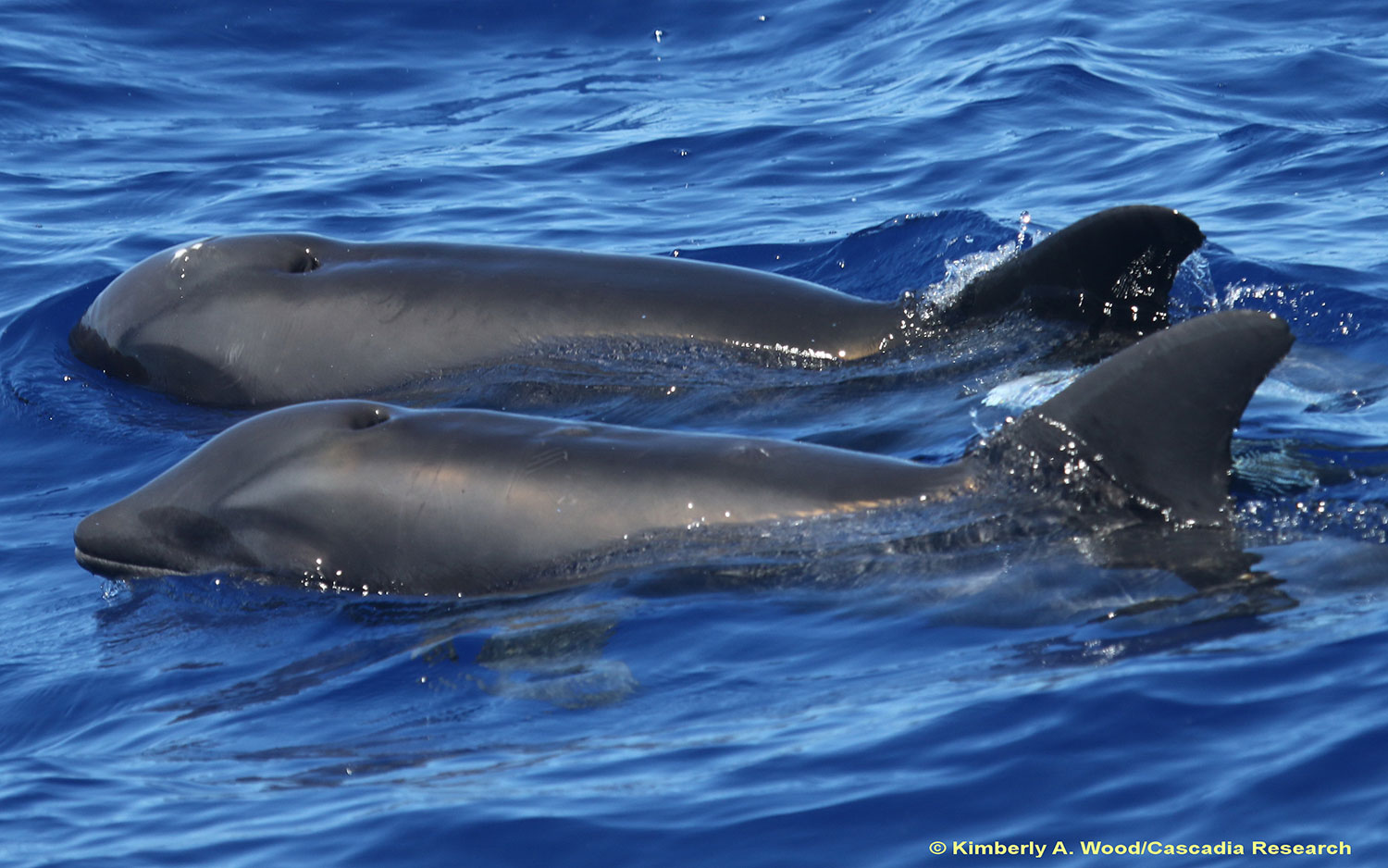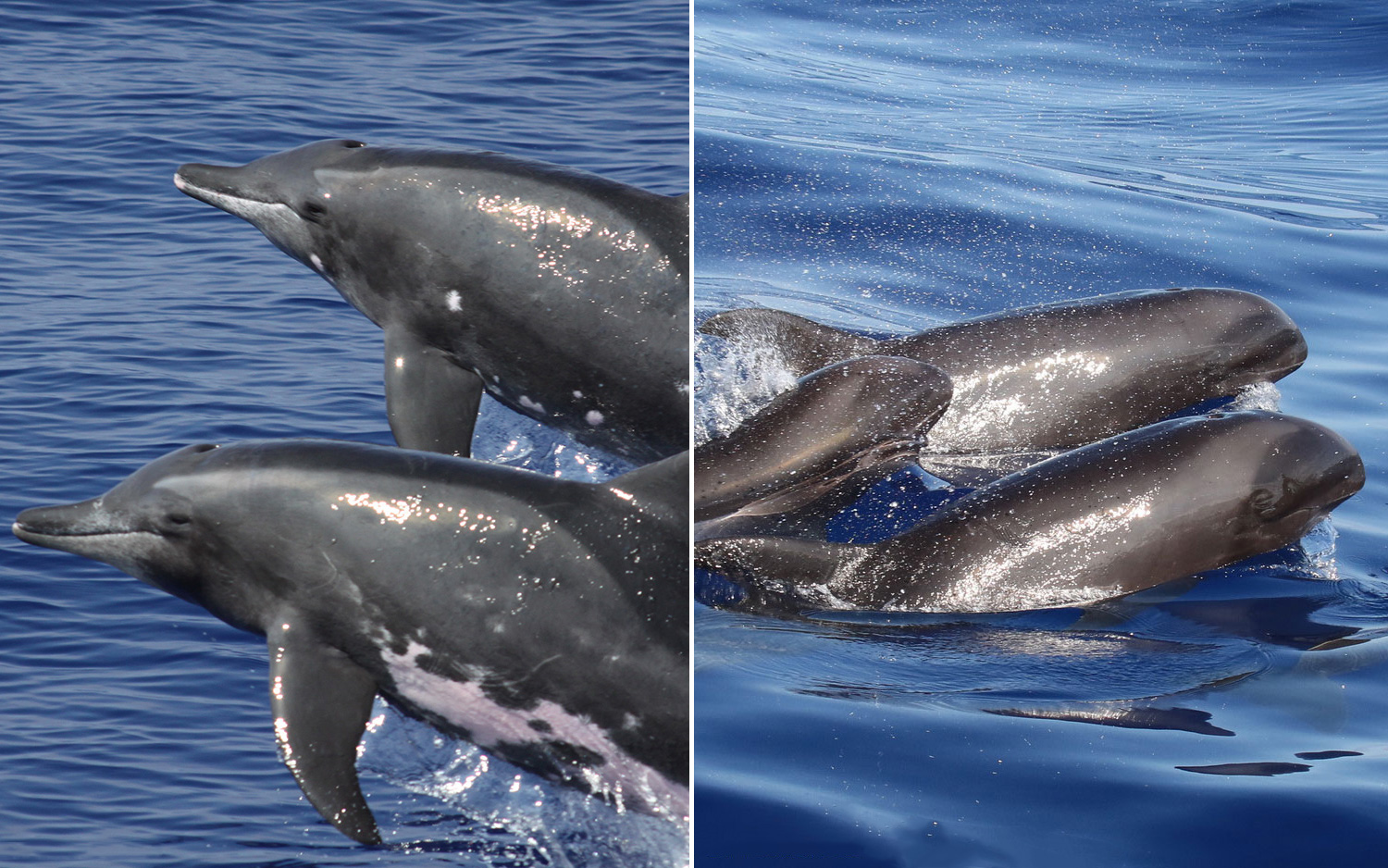This Whale-Dolphin Hybrid Is Not a 'Wholphin.' Here's Why.

There's some quiet mingling of the marine-mammal kind going on in Hawaiian waters.
Last year, off the coast of the island of Kauai, researchers spotted the adorable result of that mingling: a marine mammal that's a cross between a melon-headed whale and a rough-toothed dolphin.
This hybrid male has a blotchy color pattern that matches that of the rough-toothed dolphin and also sports the melon-headed whale's dorsal cape — a darker coloring on its back just below its dorsal fin.
Now, you may be tempted to call this unique individual a "wholphin," but the researchers said you probably shouldn't. That's because the melon-headed whale is not a true whale but rather a species in the oceanic dolphin family, according to Robin Baird, co-author of a new report on the hybrid individual and a research biologist at the nonprofit Cascadia Research Collective. The report detailed the results of a field study funded by the U.S. Navy that involved an investigation of the newfound hybrid, as well as satellite tagging and photo identification of other species. [Deep Divers: A Gallery of Dolphins]
"Before anyone had a good idea of the actual taxonomic relationship among species, whalers and early scientists called a number of species 'whales,'" Baird told Live Science. As understandings of the relatedness among species increased, all of those species were lumped into one family — the oceanic dolphins, or Delphinidae.
The name "wholphin" was first given to a hybrid born to a false killer whale (a species that also has the term "whale" in its common name but is in fact a dolphin) and an Atlantic bottlenose dolphin — an individual named Kekaimalu who lives at Sea Life Park in Hawaii.
"Some people are stuck on the [idea of the] whale-dolphin hybrid, but really what it is, is two different species of dolphins," Baird said.
Get the world’s most fascinating discoveries delivered straight to your inbox.
In any case, the discovery is exciting because "different species of dolphins in captivity hybridize all the time, but documenting such hybrids in the wild is relatively infrequent," Baird said. Indeed, it is the first known hybrid between a melon-headed whale and a rough-toothed dolphin, and the third known hybrid among oceanic dolphins.
To confirm the animal's mixed ancestry, the researchers took a skin biopsy from afar using a crossbow. Then, they compared its DNA to genetic data of the two species collected throughout the years for population genetic studies.
An analysis of the non-wholphin dolphin's mitochondrial DNA — genetic information passed down from mothers — indicated that the melon-headed whale was the mother. The hybrid was spotted swimming next to a melon-headed whale, which the researchers suspect could be its mom.
Though it's a new hybrid, this animal is definitely not a new species, Baird said.
"It is certainly possible for hybrid speciation to occur," Baird said. Such was the case with the Clymene dolphin that is thought to be a hybrid of the spinner and striped dolphins. "But that type of hybrid speciation is extremely rare," she said. For such a new species to emerge, hybridization would have to occur much more frequently, and the hybrids would have to be able to reproduce, and prefer to reproduce with one another, he added.
Next week, the group is heading back to Kauai for another project. If they encounter the hybrid again, they hope to get a skin biopsy of the melon-headed whale that hangs out with him to see if it might be the mother. They also hope to figure out, using an underwater GoPro camera, whether the hybrid has what's called a "post-anal keel" or a sack of connective tissue, that would indicate that it is sexually mature.
Originally published on Live Science.

Yasemin is a staff writer at Live Science, covering health, neuroscience and biology. Her work has appeared in Scientific American, Science and the San Jose Mercury News. She has a bachelor's degree in biomedical engineering from the University of Connecticut and a graduate certificate in science communication from the University of California, Santa Cruz.



